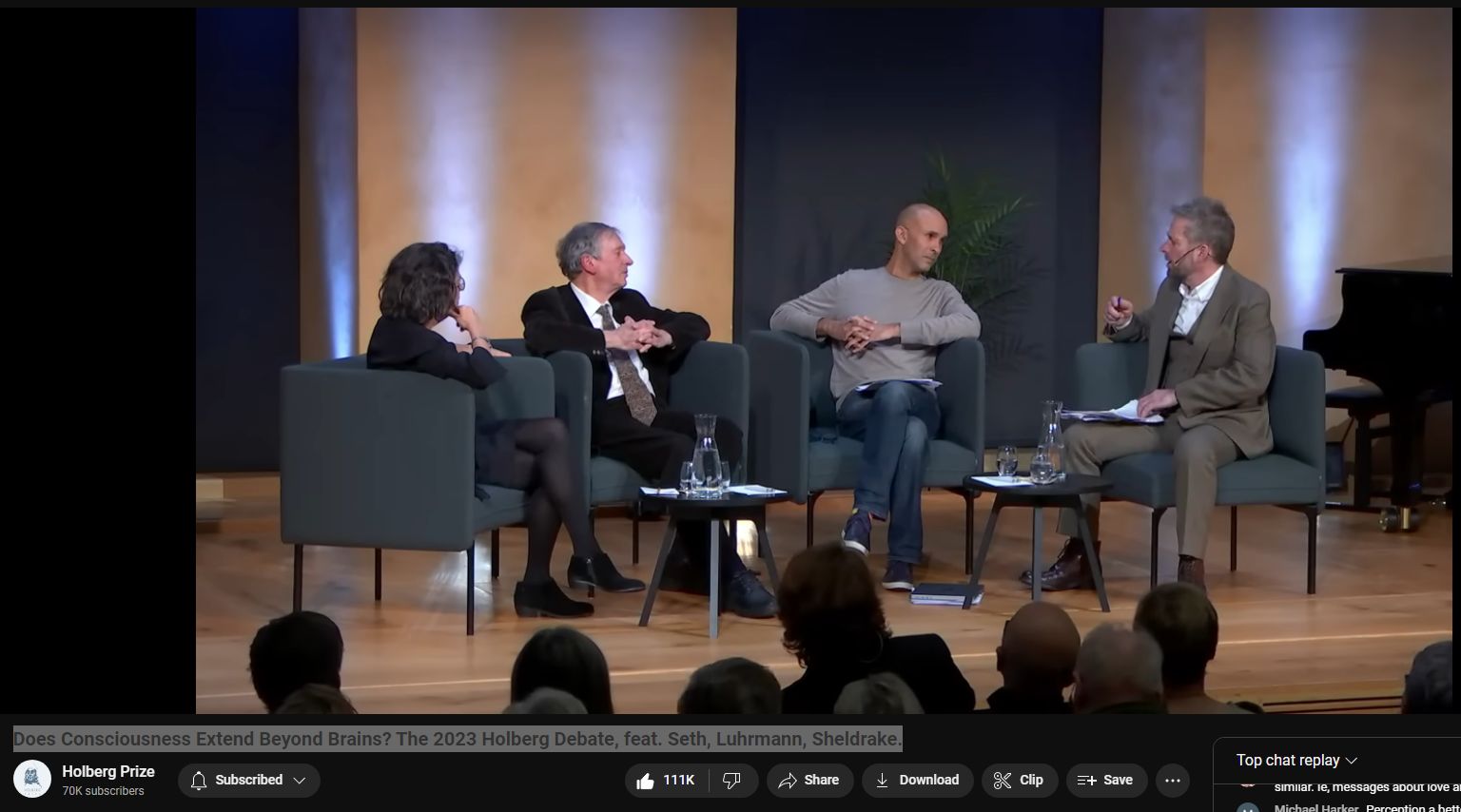Does Consciousness Extend Beyond Brains
Do conscious experiences happen both within and outside the brain, and can science solve the ‘hard problem’ of consciousness? At this year’s Holberg Debate, Tanya Luhrmann, Anil Seth and Rupert Sheldrake will take on the deep scientific and philosophical mystery of consciousness. The debate will be chaired by David Malone.
Callees who predict who is calling are right much more than pure chance. ~1:36:40 in
~2:00:00 if we make a God (in mind), does it exist in the world?
Morphogenic Field
The concept of a “morphogenic field” (more commonly referred to as “morphogenetic field”) relates to the idea proposed by biologist Rupert Sheldrake in the early 1980s. Sheldrake’s theory of morphic resonance posits that there is a field within and around a morphic unit (which could be anything from a molecule to a cell, to an organism, to a society or an entire ecosystem) that organizes its characteristic structure and pattern of activity. According to Sheldrake, these fields can influence subsequent similar systems through what he terms “morphic resonance,” suggesting that there is a kind of collective memory upon which all similar systems draw and to which they contribute.
Morphogenic Fields and Consciousness
The relation between morphogenic fields and consciousness is speculative and part of a broader dialogue on the nature of consciousness itself. Some proponents of Sheldrake’s theory speculate that morphic fields could play a role in the emergence of consciousness, or that consciousness itself might influence these fields. This idea suggests a universe more interconnected and dynamic than the one typically described by conventional physics and biology.
The Holberg Debate and Soul
The “Holberg Debate” appears to be a misunderstanding or misreference, as there’s no widely recognized debate by this name directly connected to discussions of morphogenic fields, consciousness, or the soul in academic or scientific discourse. However, the reference might be an amalgamation or confusion with various public discussions, debates, or lectures that explore the intersection of science, philosophy, and spirituality, such as those that might occur in forums like the Holberg Prize academic discussions or similar intellectual debates.
The concept of the “soul” traditionally belongs to the realms of theology, philosophy, and metaphysics, rather than science. Various religions and philosophical systems offer different interpretations of the soul, often regarding it as the immaterial essence of a being that encompasses consciousness and personality, potentially surviving after physical death. The debate over the soul’s existence, nature, and relationship to the body has persisted for millennia, with modern discussions sometimes intersecting with scientific inquiries into consciousness and the nature of reality.
Scientific and Philosophical Considerations
It’s important to note that Rupert Sheldrake’s theories, including the concept of morphogenic fields, are considered highly controversial within the scientific community. Many scientists and researchers critique the lack of empirical evidence supporting morphic resonance and argue that the theory does not adhere to established scientific principles. Consequently, discussions involving morphogenic fields, especially in relation to consciousness and the soul, tend to occur more within the realms of speculative science, philosophy, and new age thought rather than mainstream science.
In summary, while the concepts of morphogenic fields, consciousness, and the soul spark fascinating discussions across various disciplines, they each belong to different domains of inquiry. Morphogenic fields are part of a speculative scientific theory, consciousness is studied in both philosophy and science, and the soul is primarily a religious and philosophical concept. The intersections among these areas reflect ongoing human curiosity about the nature of life, the universe, and existence itself.
